The Last Lecture: Dr. Richard Simpson
Richard Simpson, computer science professor, speaks to a room full of students, faculty, and staff, about the lessons he learned throughout his 39 years of teaching. April 15. Photo by Alana Earle
In September 2007 Randy Pausch, former computer science professor at Carnegie Mellon University gave a speech affectionately titled, “The Last Lecture”. In which, he spoke about his time as a professor and reflected on life lessons after he was diagnosed with pancreatic cancer.
Since then, campuses all over the nation have followed in his footsteps to honor retiring professors.
Richard Park Simpson, also a computer science professor, gave his “last lecture”, ‘It’s not about you’, April 15, to a full room of colleagues, students, friends and family in the Legacy Hall multipurpose room.
While introducing the professor, Steve Hilton, visual arts professor, said, “His students seem to love to hate him.”
In the beginning of his speech Simpson reflected on some silly memories from when he was growing up. He made light of when he injured himself as a young child, his sister Jackie being born and stealing the lime-light and when he was asked to speak at his elementary graduation but ultimately chickened-out.
Simpson said, “I really thought I was the man,” speaking of the times as an adolescent that he said he thought highly of himself and his abilities.
His father was in the military so their family moved from Tennyson, Texas then to Waco and finally to Houston in 1964. During the last move Simpson’s family made, he became very shy and reserved.
“Almost immediately I was no longer cool,” said Simpson.
In high school, Simpson became very studious and honed in on his hobbies, he read all 34 “Tarzan” novels by Edgar Rice Burrough.
“I was the nerd that played football,” said Simpson.
He talked about his least favorite book that he read during high school, one of Agatha Christie’s famous novels. Fifteen years later while searching through boxes, he found the same book and fell in love with it.
Simpson said, “I thought to myself, I’ll never let a teacher or an environment I was in burn down a whole field of knowledge again.”
In college Simpson originally majored in chemistry until after taking organic chemistry and realizing it wasn’t his calling. He switched to mathematics and said he felt that was where he belonged. Regardless of the advice one high school counselor had given him, ‘don’t major in math.’
Simpson’s alma mater, Sam Houston State University is where he met his mentor, Dan Reeves.
Simpson said, “[He] taught me that I really wanted to be a teacher. He taught me the beauty that is in mathematics as well as the history of this wonderful field. He said I don’t care if you’re in physics, chemistry or geology, you’re standing on the shoulders of giants and [we] must pay our respects…much of my teaching style I owe to Dan. Passion is the key.”
While studying mathematics Simpson said he found his favorite things in the world, the archimedean solids, “magic squares” and icosahedron graphics, which he would later use in his teaching.
After a failed attempt to lecture to a class of students for the first time, Simpson said he realized it wasn’t about him anymore, it was about the subject he loved so much.
Simpson’s wife sent in some of his work to a conference of people who loved his work and invited them to teach kids in Australia for two years.
While there, Simpson showed his students a unique math problem involving billard balls. This equation tripped up many of the students including one girl Simpson said he heard little from. One day while in class that same girl ran to the front and slammed her answer down. Simpson said he was blown away that the little girl had correctly solved the math problem.
“She was so happy, she was just balling. I realized this was the first time she solved a problem before anyone else, she beat everyone else for the first time,” said Simpson.
After his time in Australia, Simpson taught at Tyler Jr. College and then for a year at Texas A & M before getting a call in the summer of 1980 from Louie Huffman, head of mathematical sciences at this university.
“I said, ‘where did you say you are again?’ Simpson joked to Huffman since the call happened shortly after a three mile wide tornado tore through Wichita Falls, Tx.
Once here, Simpson said he often challenged his students to problems he hadn’t tried to solve himself or the tricky icosahedron graphics program. He said this is where his students loved to hate him. Simpson said many times he would get letters or a phone call from former students ‘who had gone on to do big things’ after graduating.
“Some work at Microsoft, Google, Amazon, Nvidia and many have PhDs in computer science,” Simpson said. “My students have given me more joy than I could possibly have given them.”
The most important lesson Simpson said he learned and wants to pass on is not being to not get too caught up in your grades and be present in your education, to be here to learn, not just get A’s.
Simpson said, “I came to school. Notice that I didn’t say work. I come to school.”



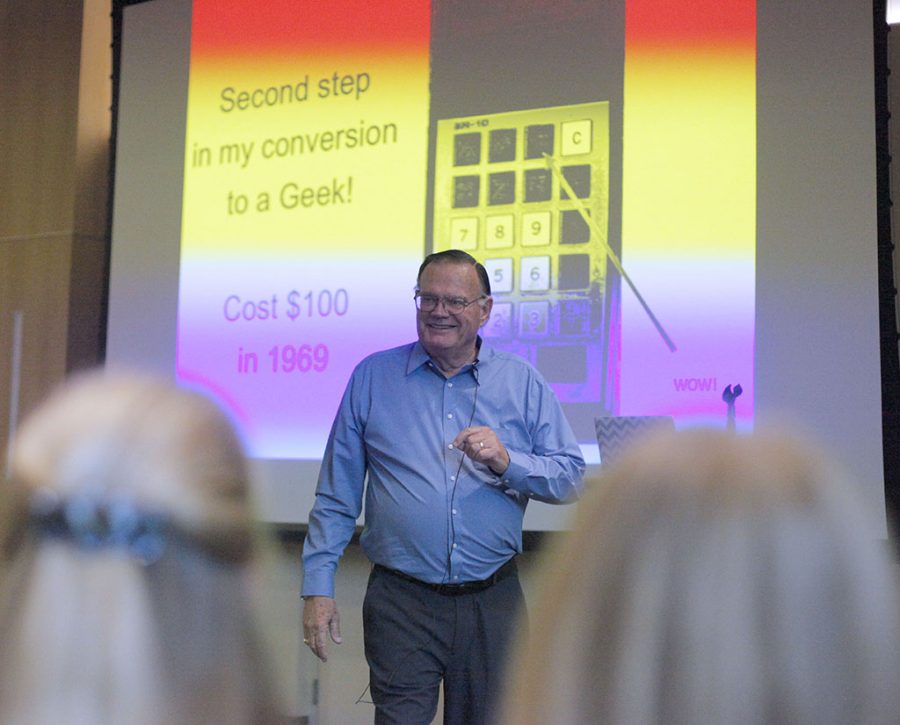
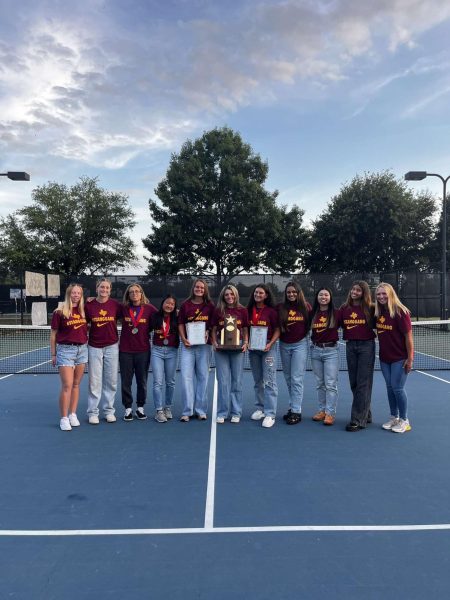
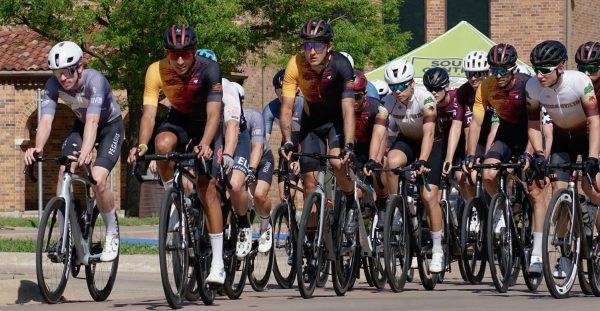

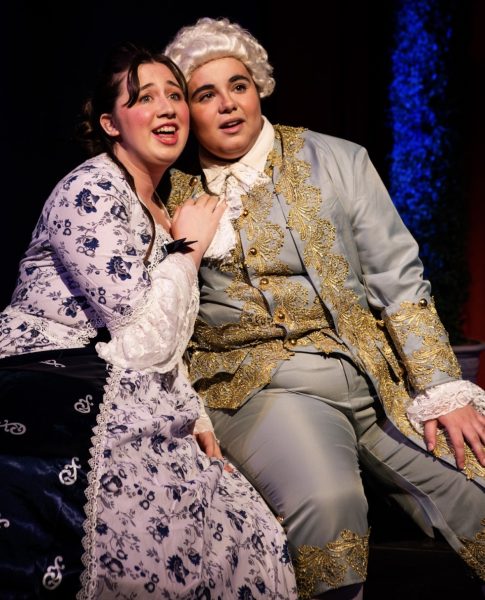

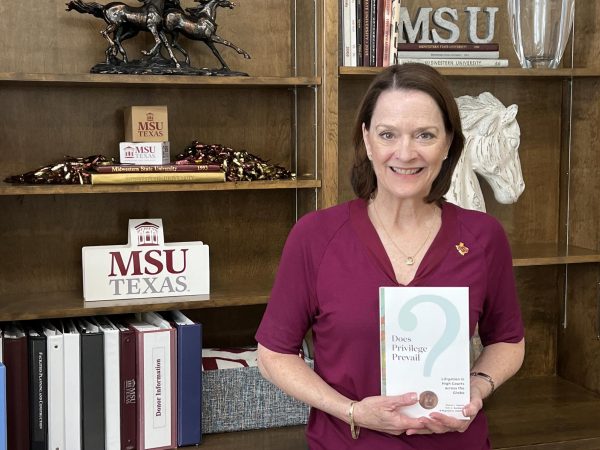
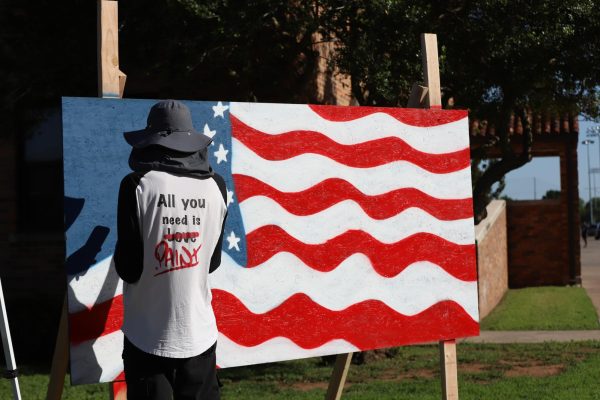
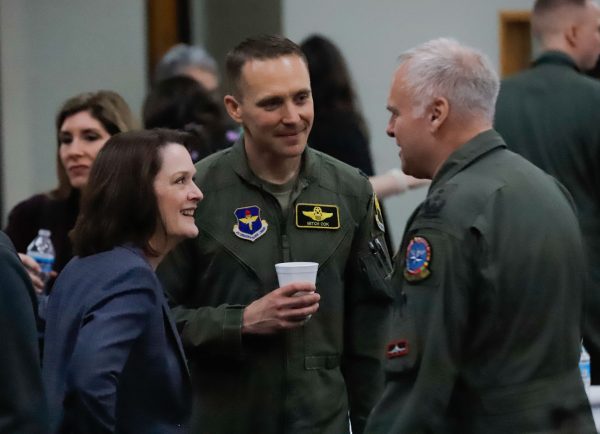
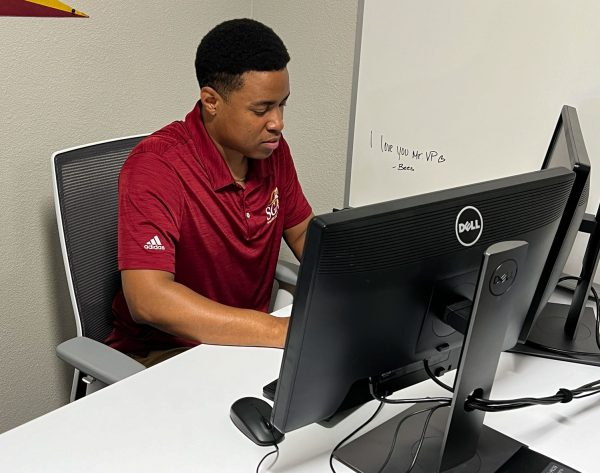
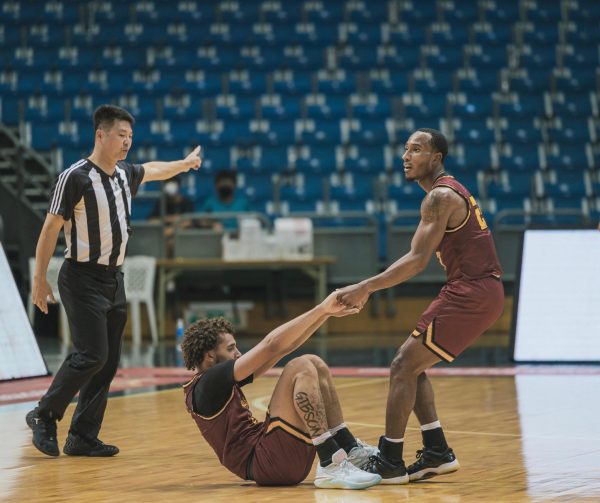

Sowjanya Nemani • May 10, 2021 at 1:29 PM
Blessed to have such a great teacher and mentor.
Evan • Apr 17, 2019 at 1:46 PM
Mr. Simpson was a wonderful teacher and mentor. I’ll miss him greatly.